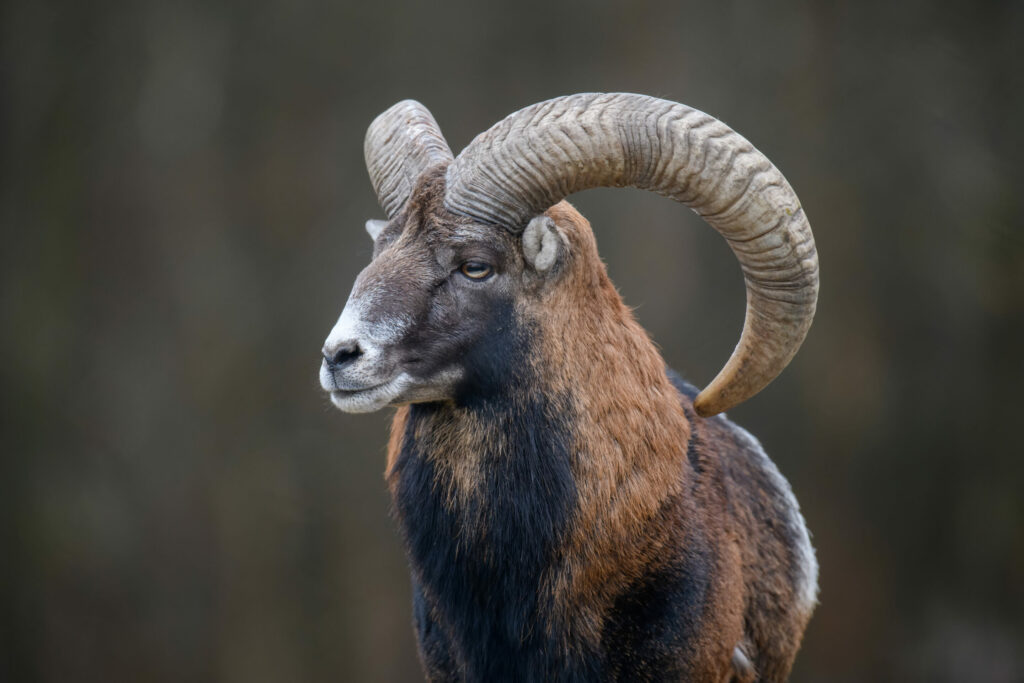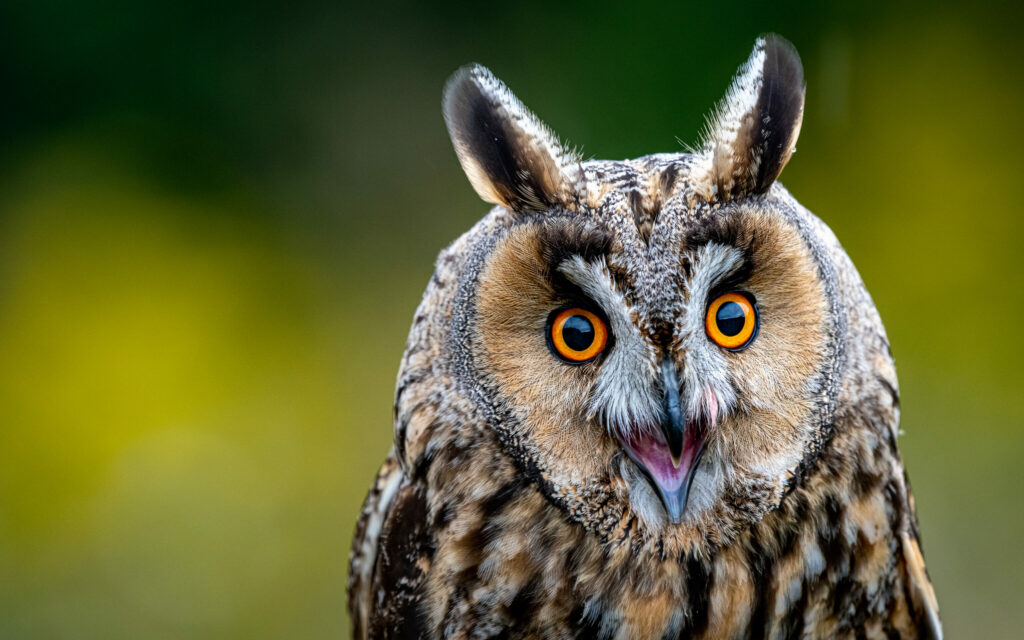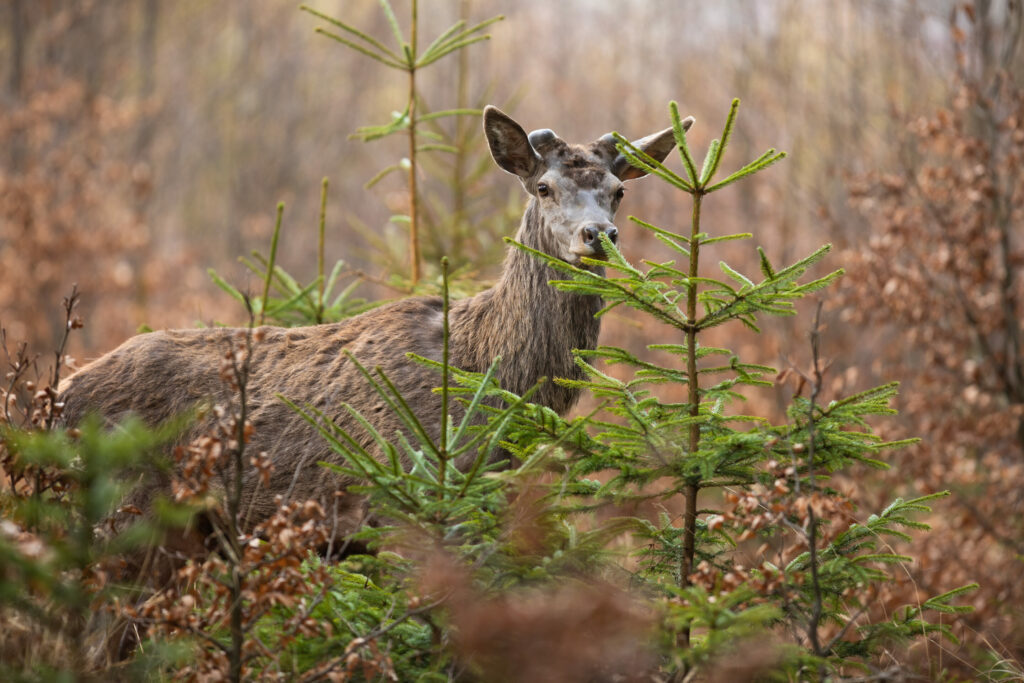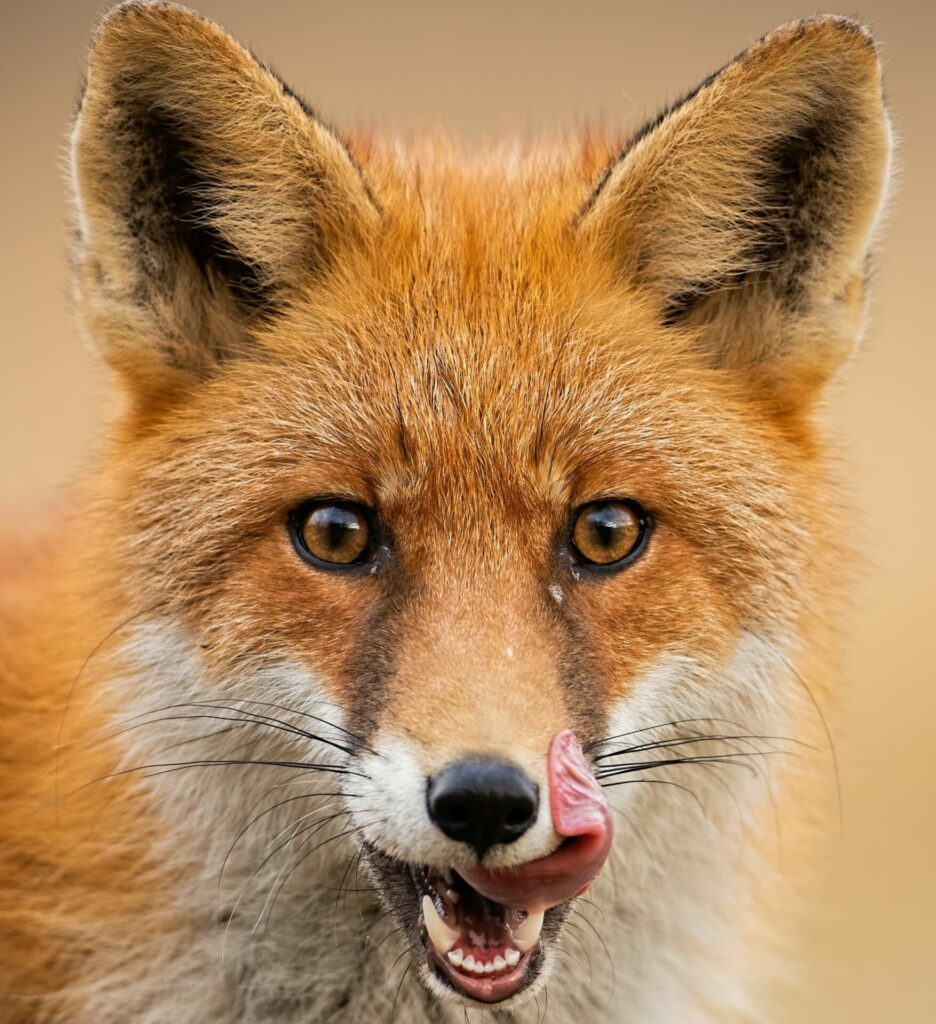What does "wild nature" mean to you?
Throughout the exhibition WILD?, the visitor explores the boundary that separates wild animals from humans. But does this boundary really exist? What is the place of the human being in nature? Do we have a responsibility in the challenges wild animals face? All these burning questions, relevant to today’s society, echo through the exhibition and invite us on a fascinating and emotional journey.
From one space to the next, the visitor is confronted with different perceptions of the wild - Exotic? Distant? Dangerous? Untouched? Gradually, each perception is challenged and doubt creeps in: what is wild exactly?
Across 750 m² of films, multimedia installations, games, interactive elements and mounted specimens each section creates its own unique atmosphere, engaging the visitor's senses and emotions to spark curiosity and critical thinking. Some of the installations challenge our understanding and perception of the concept of “wild” and invite you to question the boundary that separates the “wild” from the human.
Behind the scenes
“Capturing” wildlife has been part of our habits for centuries. Hunting animals and bringing back trophies shifted towards a hunt for the perfect wildlife shot, but the thrill remains the same.
Our representations of wildlife are given to us through documentaries, photography, storytelling and animal parks. But is this pristine representation really true to life? What does it look like from the animal’s perspective when a filming crew embarks on safari or when tourists regroup in front of their cage?
As for animal parks, the Leopold Park, near the museum, was home to the Brussels Zoo just a few centuries ago. A short film illustrated with the institute's archives, tells the brief history of the Brussels Zoo, which opened its doors in 1851. It was a fashionable promenade, displaying exotic animals and plants to entertain and spark scientific interest. Less than 30 years later, the zoo went bankrupt due to poor management.

Big mouflon animal. Wildlife scene from nature.
Domestication
Over 20,000 years ago, a special relationship formed between the wolf — the ancestor of the dog — and humans. When humans began cultivating grains 10,000 years ago, they gradually domesticated other animals. Today, animals have become our domestic companions.
Domestication occurred over many generations, through a continuous process of breeding and selection, leading to specimens increasingly adapted to serve humans. However, this selection based on strength or appearance sometimes has harmful consequences for the animal’s health. The exhibition shares the story of the domestication of the wolf and eight other wild animals with the scientific expertise of the institute's researchers.
The exclusive video by Flemish director and actor Herwig Ilegems turns the relationship between humans and animals upside down. “Head to Head” is a film full of emotion and poetry, where man has a true face-to-face encounter with animals. The actor approaches them without imposing himself. He makes eye contact, follows their gaze, and mimics their behaviour as if to seek their permission. When he feels the animal is comfortable enough, he gently rests his forehead on the beak, nose, or forehead of the animal.
Are we any different?
Human beings have the habit of thinking themselves separate from other animals. We tend to believe that we are the only species capable of communication, farming, crafting; the only ones with a conscience and sense of morality. But this isn’t necessarily right.
Humans aren’t the only species that communicates! Animals chirp, bark, creak, and hoot. These sounds stem from an instinct for survival. Animals use them to attract mates, defend their territory, or warn of danger. It’s their way of communicating, far more subtle than we might imagine. It’s part of their culture!
But that’s not all: who knew ants are excellent farmers and crows are very good at crafting and using tools!? The animal kingdom holds many surprises!
We are just a small part of a greater whole
The figures representing live beings and biomass are dizzying! Human beings are part of the vertebrate species, who make up just 7% of the animal kingdom.
Animals in turn represent 0.4% of living organisms on our planet (plants account for more than 82%!).
Around 2 million live beings are currently known to scientists, with about 8 million species still to be discovered!
The exhibition takes a closer look at the species close to us as it highlights Belgian wildlife and the richness of the Institute’s collections.
The specimens tell the story of different animals from our regions, strengthening the connection between visitors and nature in Belgium. The projection of footage from observation cameras featuring Belgian wildlife contributes to this effort. You can catch a glimpse of nature slowly regaining its rights in Belgium and beyond.

A beautiful owl resting outdoors in the nature on the blurry background.
Return of the wolf in Belgium
The story of the wolf is a fine example of nature regaining its right in our regions. This species, long gone in continental Europe due to hunting and the destruction of its habitat, has made its first appearance back in Belgium a couple years ago. It acquired the status of a strictly protected species under the Bern Convention.
“As a top predator, the wolf plays a crucial role in maintaining ecosystem balance. It regulates the populations of its prey, particularly large herbivores like deer, roe deer, and wild boar. If these animals become too numerous, they can cause damage to forests and other natural habitats. The presence of the wolf thus promotes forest regeneration and helps regulate the populations of smaller predators, such as foxes and raccoons”, explains Marie Baeckelandt, biodiversity expert at the Institute of Natural Sciences. “This is why its protection status is important: as part of a broader effort to preserve biodiversity and the vital services it provides.”
However, the return of the wolf poses challenges in terms of coexistence with humans. “In Belgium, natural habitats are highly fragmented, and the human population density is high. This makes it difficult for wolves to move around without coming into contact with humans or their activities, particularly livestock farming”, says Baeckelandt.
To address these challenges, representatives of the EU member states agreed to consider lowering the protection status of the wolf, although this status is the very reason the species could gradually reclaim the territories it once lived in. Leaning towards a better way of coexisting could be a more sustainable solution, though: “Regional solutions and action plans, such as reinforced fences, habitat connectivity restoration, and compensation systems, are being implemented to ensure a harmonious and respectful coexistence”, according to Baeckelandt.
Sound the alarm!
The end of the visit takes on a red hue: Many dangers threaten wild nature. Through its actions, humanity is destroying much of life. The reality is undeniable: a terrifying proportion of wildlife is lost forever, and the decline of insect species, the loss of plant diversity, and the fragmentation of habitats are unmistakable signs of this.
But what is our role as human beings? Is humanity threatening or threatened itself? The time has come to question the relationships humans have with nature. For more than two centuries, some have been sounding the alarm. And for more than two centuries, those warnings have gone unanswered...
We are all wild!
Making room for other species and relearning how to live together is a major challenge that lies ahead, but our survival depends on it. Are you ready to contribute?

Wild stag with growing antlers standing in woodland.
A personalized exhibition by the Institute of Natural Sciences
WILD? is an exhibition adapted by the Institute of Natural Sciences and designed by the Museum of Natural History in Neuchâtel (Switzerland).
Observe, marvel, and wonder... Natural sciences flirt with philosophy, anthropology, and poetry.
An experience to live and share.
Alone, with family, or in a group, for those 11 years and older.
The Brussels Times is an official Media Partner for the WILD? exhibition - discover more here.

